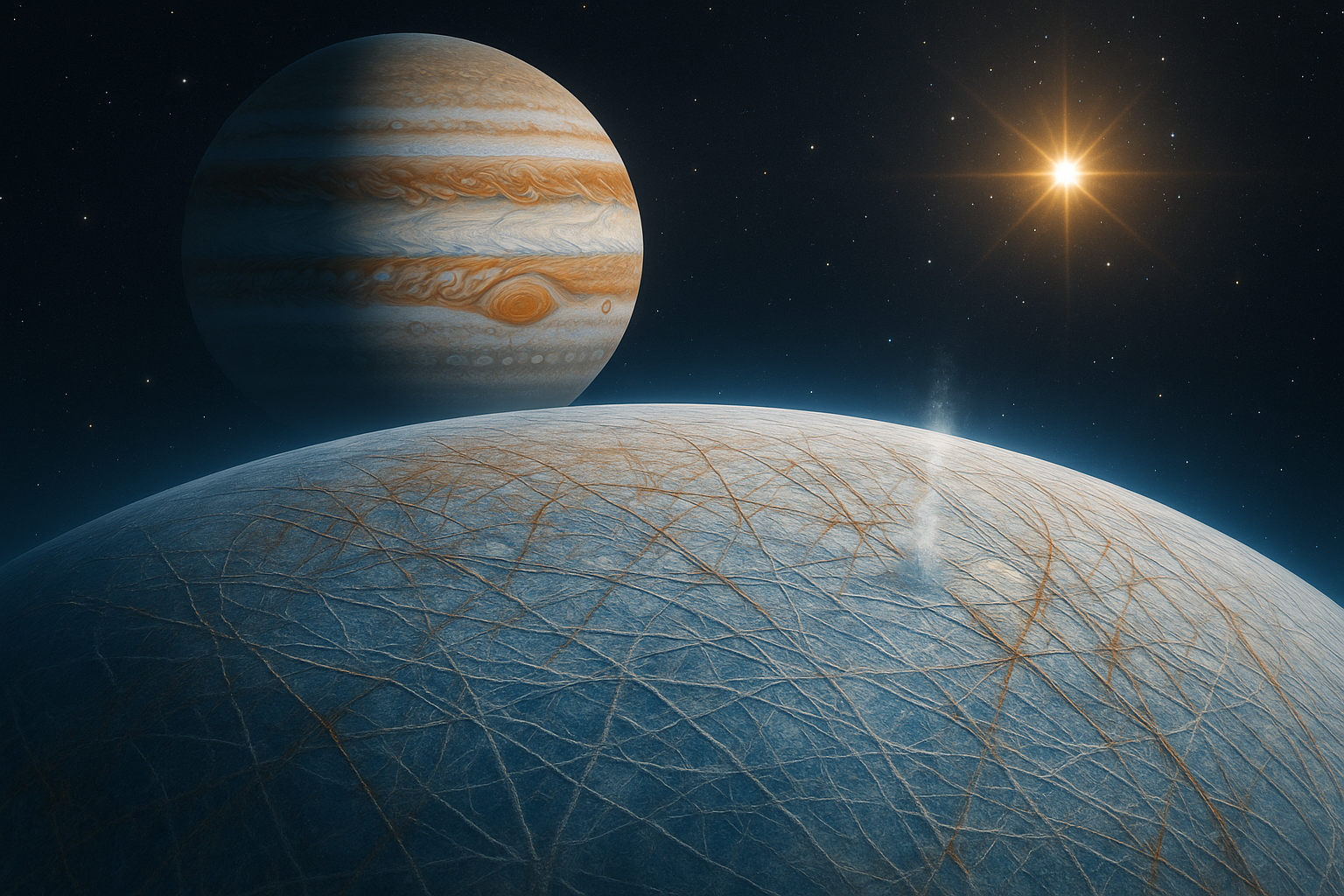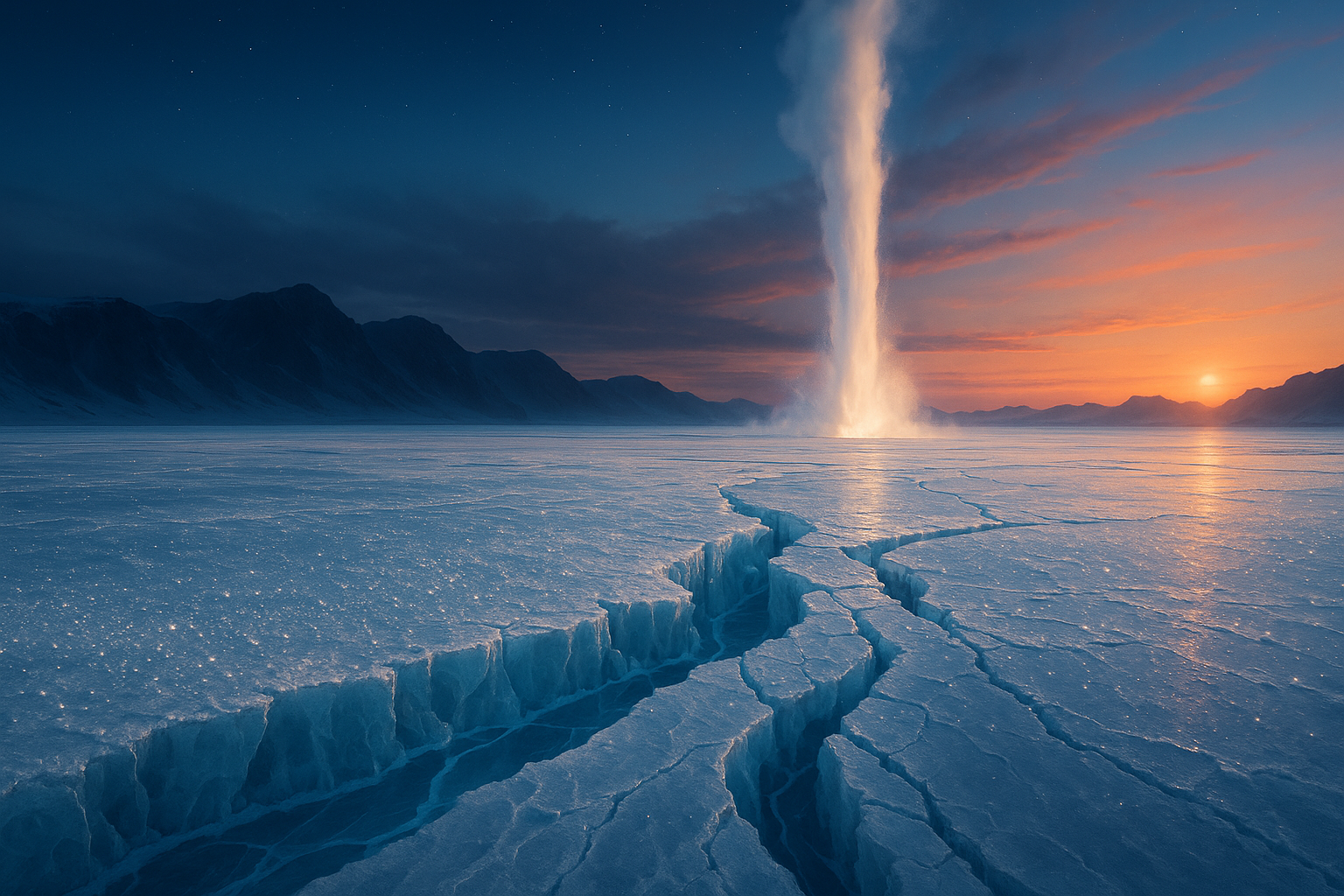Imagine a world of ice and mystery lying beneath the cosmic canvas of our solar system—Jupiter's moon Europa. Recent findings from the James Webb Space Telescope reveal spectra that suggest the icy surface of Europa is in a dynamic state, continuously changing. Scientists believe that these alterations in the surface ice could unveil not only the intricate dance of external forces at work but also the thrilling possibility of geological activity beneath the surface. This field of inquiry isn't just for the experts; it holds incredible significance for everyone, as it might be a key to understanding life's existence beyond Earth.
Europa, with its tantalizing hints of subsurface oceans, captures the imagination of scientists and laypeople alike. But what does this mean for you and me? Why should we care about a distant icy moon? The truth is, exploring extraterrestrial worlds like Europa helps us comprehend our own Earth's evolution and the potential for life on other planets, igniting our desire for exploration and understanding. This isn't just science fiction—it's a quest that unites our curiosity with a love for discovery.
What the James Webb Space Telescope Found
According to findings reported via Science Daily, Europa's surface is not static but is undergoing *surface modification*. Here are some pivotal details:
- Surface Crystallization: Scientists observed that different areas of Europa's icy surface are crystallizing at varied rates. This variation might reveal more complex processes shaping the moon's exterior.
- External Processes: Factors such as radiation from Jupiter and cosmic impacts might contribute to the dynamic changes on Europa.
- Geological Activity: The potential for geological activity—a warm ocean beneath the surface—can result in eruptions of water or other materials onto the ice above.
Understanding Surface Modification
The research into Europa's surface modifications helps scientists understand a few key concepts:
- Planetary Science: Europa serves as a natural laboratory for studying how celestial bodies can evolve over time.
- Icy Worlds Exploration: Europa's icy surface is a prime target for futuristic exploration missions that could unlock secrets about life beyond Earth.
- Geological Processes: By studying Europa, we can gain insights into geological activities similar to those happening on Earth.
Real-World Implications of Europa's Findings
Why does our growing knowledge of Europa matter? The implications are vast. Here are a few powerful ideas:
- Searching for Extraterrestrial Life: If life exists elsewhere, Europa might be one of the most probable candidates. Understanding the moon's geology and chemistry could provide hints about sustainability of life beyond Earth.
- Advancements in Technology: Missions targeting icy bodies like Europa inspire innovation in technology, pushing forward our capabilities in space exploration.
- Global Collaboration: Space endeavors often spur international cooperation, as countries work together to explore the universe’s mysteries, enhancing global unity.
Our Connection to the Universe
The research surrounding Europa invites us to rethink our assumptions about life and existence. Picture this: as you look toward the night sky, you're not just gazing at stars; you're dreaming of possibilities, of places and worlds where spectacular phenomena unfold. Science provides that link, rallying our hopes and aspirations.
We owe much to scientists dedicated to unraveling the cosmos deeper and brighter, revealing worlds like Europa that challenge our understanding of home. Their work sparks a flame of wonder, igniting our collective imagination as we ponder our place in the universe. But here’s the kicker—any attempt to look externally should urge us to reflect internally on how we protect our own planet.
Potential Objections and Limitations
While it’s breathtaking to ponder life on Europa, it’s important to address some limitations and objections:
- Distance Challenges: Exploring Europa is expensive and requires advanced technology that may be years away from being developed.
- The Harsh Environment: We must consider the extreme conditions on Europa that would make it difficult for human-made probes to survive for long periods.
- Scientific Uncertainty: While findings are promising, the reality of life-supporting environments remains unproven; further research is needed to confirm theories.
Join the Quest for Discovery!
As we pursue these celestial mysteries and cling to the hopes they invoke, we invite you to participate in the discussion. What do you think of the ongoing discoveries on Europa? Do you imagine a future where we might hear not just silence, but life echoing from other worlds? Let’s engage in this dialogue! Share your thoughts in the comments below.
As you journey through this exploration, consider joining the vibrant community at iNthacity. Together, let’s become citizens of this "Shining City on the Web," sharing knowledge, contributing to conversations, and celebrating the boundless potential of science and exploration! Like, share, and spread the word about the wonder of our universe!
Wait! There's more...check out our gripping short story that continues the journey: Isla's Journey
Disclaimer: This article may contain affiliate links. If you click on these links and make a purchase, we may receive a commission at no additional cost to you. Our recommendations and reviews are always independent and objective, aiming to provide you with the best information and resources.
Get Exclusive Stories, Photos, Art & Offers - Subscribe Today!

























Post Comment
You must be logged in to post a comment.